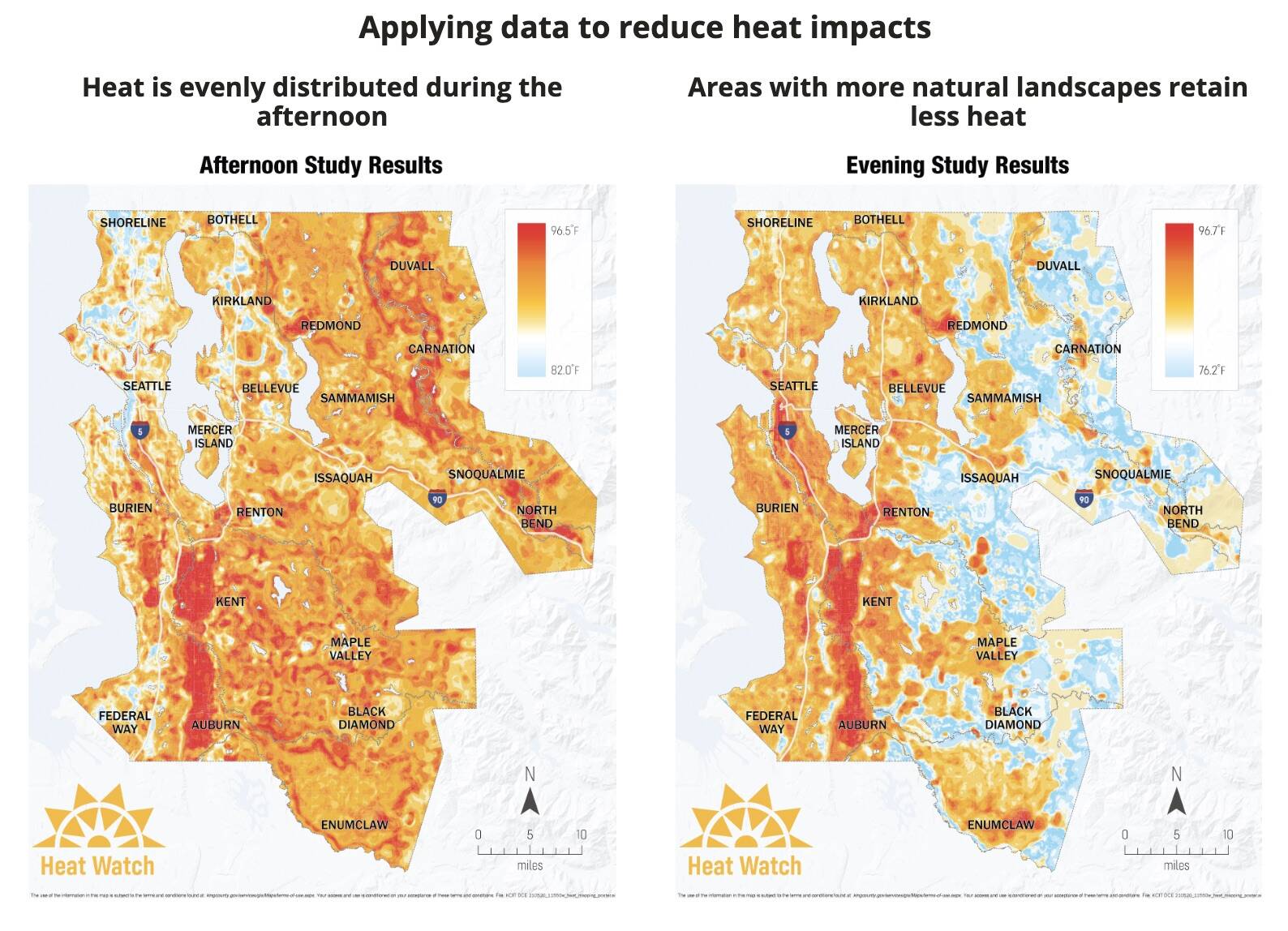A year after a heat wave killed over 30 people in King County, officials are working to develop an extreme heat mitigation strategy to prevent further loss of life.
On June 27, officials from several King County departments discussed the work they’re doing to help residents prepare for future heat waves, which are expected to increase in severity and frequency due to climate change.
Since the 2021 heat wave, the county has already taken steps to protect residents from deadly heat, including adding bus shelters, planting trees and protecting existing greenspaces. The extreme heat mitigation strategy will be part of the county’s strategic climate action plan and its regional hazard mitigation plan.
“The extreme heat mitigation strategy that we will be developing will provide a strategic framework that supports comprehensive and coordinated action on heat,” said Lara Whitely Binder, King County Climate Preparedness Program Manager. “The strategy will identify near-term and longer-term heat mitigation actions that King County and community partners can take to effectively address heat impacts.”
Moving forward, the county plans on evaluating urban planning policies and codes to improve heat resilience, and expand access to energy-efficient retrofits and design features like green roofs that can lower building temperatures, Whitely Binder said.
Many of the officials at meeting said that although climate change and extreme weather events affect everyone, not everyone is affected equally. Whitely Binder said equity will be a major focus of the strategy.
Right before the 2021 heat wave scorched the county, it released the findings of a heat mapping project that found Auburn, Kent and portions of Seattle were disproportionately affected by high temperatures. Lack of tree canopy and an abundance of hard surfaces like pavement in those areas trap heat and exacerbate extreme temperatures. The results of the heat mapping project will guide the county’s strategy for extreme heat mitigation.
“That heat mapping campaign helped us get a better sense of how temperatures can vary across King County based on differences in land use, land type and geography,” Whitely Binder said. “The information really gave us a better visual of what we refer to as the urban heat island effect and can help inform where and how what types of heat mitigation strategies we may want to employ to help reduce temperatures in those areas.”
To fund the extreme heat mitigation strategy, the county applied for a $120,000 grant from FEMA, Whitely Binder said.
In addition to expanding or improving physical infrastructure to combat extreme heat, the county is also focusing on improving how it communicates with the public, said Brendan McCluskey, director of King County Office of Emergency Management.
“Last year’s heat wave really taught us that we need to be able to communicate with people and communicate in a coordinated manner, using the media, using social media and using the other tools that we have,” McCluskey said. “So we’ve already implemented actions that will help get this critical life-saving information out to people and really be better prepared now this year than we were last year.”
In addition to English and Spanish, the county is now able to disseminate information in Arabic, Chinese, French and several other languages, McCluskey said.
Health Officer Dr. Jeff Duchin spoke about the often overlooked health risks related to climate change and extreme heat events. Beyond the known death toll, last year’s heat wave put a strain on the region’s EMS and hospital systems as people sought treatment for various heat-related illnesses.
“Both extreme weather events and long-term environmental consequences of climate change, lead to direct human health effects and disruptions of our environment, our physical, biological and ecological systems,” Duchin said. “So for example, extreme heat, it causes deaths and serious illness from heatstroke, but also from heart attacks from exacerbation of chronic lung, heart and kidney disease, It causes complications in people with diabetes and it can lead to pregnancy complications.”


